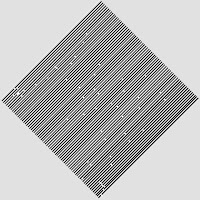The recent spate of gun violence has caused a lot of hand wringing and unrealistic suggestions on "gun control". It occurred to me that gun violence is a "disease" that is preventable and similar, in principle, to vaccine preventable diseases. “Herd immunity (or community immunity) describes a form of immunity that occurs when the vaccination of a significant portion of a population (or herd) provides a measure of protection for individuals who have not developed immunity” (Wikipedia)
 Essentially, herd immunity is conferred on un-vaccinated individuals when a critical mass of the population is immunized against the disease. This critical mass number varies with disease and vaccine, but the principle is useful in that it may apply to controlling gun violence. The answer to gun violence is not to reduce and restrict gun ownership, but to increase use and training among the general population to achieve a critical mass of "immunity". Ann Coulter has a list of gun incidents (largely unreported) where casualties were minimal because of the presence of gun toting, law abiding citizens (reference link in the end of this blog). To me the case for “gun immunization” is pretty strong and all the hand wringing in liberal and some conservative circles does not address the problem. Here are some relevant portions from Coulter’s article:
Essentially, herd immunity is conferred on un-vaccinated individuals when a critical mass of the population is immunized against the disease. This critical mass number varies with disease and vaccine, but the principle is useful in that it may apply to controlling gun violence. The answer to gun violence is not to reduce and restrict gun ownership, but to increase use and training among the general population to achieve a critical mass of "immunity". Ann Coulter has a list of gun incidents (largely unreported) where casualties were minimal because of the presence of gun toting, law abiding citizens (reference link in the end of this blog). To me the case for “gun immunization” is pretty strong and all the hand wringing in liberal and some conservative circles does not address the problem. Here are some relevant portions from Coulter’s article:
“Two economists, William Landes at the University of Chicago and John Lott at Yale, conducted a massive study of multiple victim public shootings in the United States between 1977 and 1995 to see how various legal changes affected their frequency and death toll.
Landes and Lott examined many of the very policies being proposed right now in response to the Connecticut massacre: waiting periods and background checks for guns, the death penalty and increased penalties for committing a crime with a gun.
None of these policies had any effect on the frequency of, or carnage from, multiple-victim shootings. (I note that they did not look at reforming our lax mental health laws, presumably because the ACLU is working to keep dangerous nuts on the street in all 50 states.)
Only one public policy has ever been shown to reduce the death rate from such crimes: concealed-carry laws.
The effect of concealed-carry laws in deterring mass public shootings was even greater than the impact of such laws on the murder rate generally.
Someone planning to commit a single murder in a concealed-carry state only has to weigh the odds of one person being armed. But a criminal planning to commit murder in a public place has to worry that anyone in the entire area might have a gun. Mass killers may be crazy, but they’re not stupid “
This herd immunity concept already works in other areas of law enforcement - Take speeding, for example. With a critical mass of random police cruisers, excessive speeding is prevented for the most part. Once funding issues affect the numbers of personnel deployed, speeding and other infractions of the law start occurring in greater numbers. One of the comments below mentions the MotherJones article. That article misses the point in that the potential presence of large numbers of concealed weapons carried by law abiding citizens would act as a deterrent towards mass shootings- as Ann Coulter said "They may be crazy, but they are not stupid". The stupidity, I think, occurs among those who wring their hands and want to take away all guns off the streets (leaving only those capable of carrying out a Mumbai type massacre with guns to do as they wish)
Note: all pictures are copyright J Devasundaram. Do not use without permission and attribution
1. http://en.wikipedia.org/wiki/Herd_immunity
2. http://www.humanevents.com/2012/12/19/ann-coulter-we-know-how-to-stop-school-shootings/









